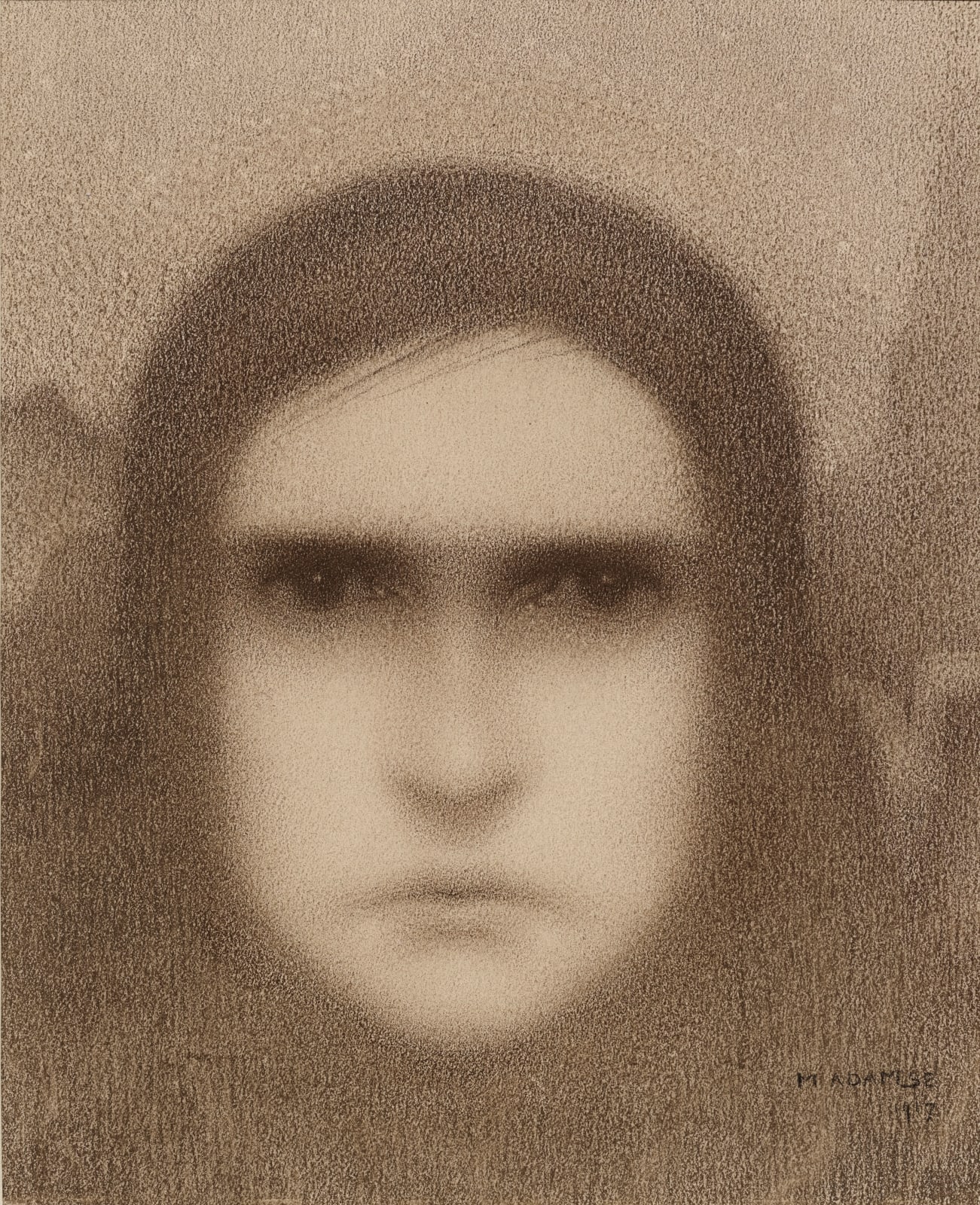Marinus Adamse (1891-1977)
Adamse began his career at the Bouvy glass studio in Dordrecht, one of the most renowned Dutch glass factories. Under Albert August Plasschaert’s mentorship at Bouvy, Adamse’s talent quickly garnered attention. In 1910, Adamse received a stipend from the Ary Scheffer Foundation. A skilled draughtsman, he was awarded a grant allowing him to attend Munich’s Akademie der Bildenden Künste from 1912 to 1914. Afterwards, he settled in Rotterdam where he exhibited with the avant-garde De Branding and was a member of the artists’ societies Pulchri in The Hague and Pictura in Dordrecht. Adamse moved frequently, ultimately returning to his hometown of Dordrecht.
Unlike the internationally influential collective De Stijl, founded the same year, De Branding remained relatively obscure. Their cohesion was not a shared style, but a belief to create a new modern art and collaboration in Rotterdam. Less dogmatic in their approach, the exhibiting artists, versed in the supernatural and abstract art, showcased a wide range of styles, including the esoteric and occult. Although Adamse was not part of the group’s inner circle, he was invited to their third exhibition which opened on 30 October 1917, alongside fellow guests Samuel Jessurun de Mesquita and Jan Toorop.[1] Whether the present drawing was included in this exhibition remains unclear; the absence of a catalogue or review shrouds the content in mystery, much like De Branding itself. An eclectic mix, its identity and purpose were as enigmatic as its exhibitions. Over time, De Branding became associated with occult-oriented abstract art, although its initial contribution was to place Rotterdam at the center of innovative international artistic development during the interbellum.
Adamse’s oeuvre is inhabited by symbolic realist figures and small floral compositions, much like his contemporary Jan Mankes. Adamse’s Head exudes an ethereal state suffused with melancholy. Instead of traditional portraiture, Adamse envelopes his subjects in a monotone palette, eschewing line in favor of velvety textures. The androgynous head emerges softly, illuminated by subtle shifts in pressure on the crayon. The piercing eyes rendered in the darkest tones contrast with the luminous halo, achieving a dreamscape that transcends both symbolism and realism, evoking an otherworldly overtone imbued with quiet intensity.
[1] Els Brinkman, a.o., De Branding 1817-1926, Rotterdam 1991, p. 21



